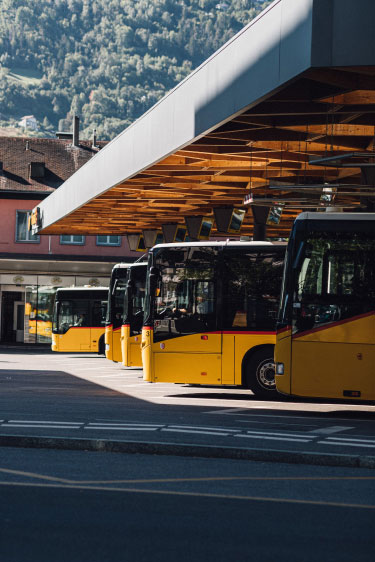The Severity of Bus Accidents
Bus accidents are a serious issue that can cause severe injuries, loss of life, and damage to property. Buses are an essential component of public transportation systems globally, providing a convenient means of travel for millions of individuals every day. Nevertheless, a combination of factors, including driver mistakes, mechanical malfunctions, and unfavorable weather conditions, can contribute to bus accidents, resulting in catastrophic outcomes. In this article, we will explore the reasons behind these accidents, their repercussions, and the safety precautions aimed at preventing them.

What Are the Causes of Bus Accidents?
Multiple factors contribute to the occurrence of bus accidents. Understanding these causes is crucial in developing effective preventive measures. Some common causes include:
- Driver Error: Bus accidents can often be attributed to driver error, such as distracted driving, fatigue, speeding, or driving under the influence of alcohol or drugs. Distractions inside the bus, like passengers, electronic devices, or excessive multitasking, can divert a driver’s attention from the road, increasing the risk of an accident.
- Mechanical Failures: Faulty bus equipment, including brakes, tires, steering systems, or engine malfunctions, can lead to catastrophic accidents. Regular maintenance and inspections are necessary to identify and rectify potential mechanical failures promptly.
- Adverse Weather Conditions: Severe weather conditions, such as heavy rain, snow, or fog, can reduce visibility and create slippery road surfaces, making it challenging for drivers to control the bus. This increases the likelihood of accidents, especially if drivers fail to adjust their driving behavior accordingly.
- Road Conditions and Infrastructure: Poorly maintained roads, inadequate signage, construction zones, or unexpected obstacles on the road can pose significant hazards for buses. Inadequate infrastructure, including poorly designed bus stops or a lack of dedicated bus lanes, can also contribute to accidents.
What Impact do Bus Accidents Have?
The consequences of bus accidents can be far-reaching and affect various aspects of individuals’ lives, communities, and transportation systems. Some notable impacts include:
- Loss of Life and Injuries: Bus accidents can result in severe injuries and fatalities for passengers, drivers, pedestrians, and occupants of other vehicles involved in the collision. The physical, emotional, and financial toll on the victims and their families can be immense.
- Disruption of Public Transportation: Bus accidents can disrupt public transportation services, leading to delays, route changes, and inconvenience for commuters. This can have significant economic and social implications, particularly in areas heavily reliant on buses as a primary mode of transportation.
- Property Damage and Financial Losses: Bus accidents often cause substantial property damage to the vehicles involved and surrounding infrastructure. Repairing or replacing buses, as well as compensating for property damage and medical expenses, can result in substantial financial losses for transportation authorities and insurance companies.
- Safety Concerns and Public Perception: Repeated bus accidents can raise safety concerns among the public and erode trust in public transportation systems. It becomes imperative for transportation authorities to address these concerns proactively through improved safety measures, training programs, and effective communication with the public.
Safety Measures and Prevention Strategies Against Bus Accidents
To mitigate the risks associated with bus accidents, various safety measures, and prevention strategies have been implemented worldwide. These include:
Driver Training and Education
Thorough driver training programs focused on defensive driving, awareness of potential hazards, and adherence to traffic regulations can significantly reduce the likelihood of bus accidents. Ongoing education and refresher courses can also help drivers stay updated on best practices and emerging safety technologies.
Vehicle Maintenance and Inspections
Regular vehicle maintenance and inspections are vital to ensure the proper functioning of buses. Transportation authorities and bus operators must implement rigorous maintenance schedules to identify and address any potential mechanical issues promptly. This includes regular checks of brakes, tires, lights, and other critical components.
Safety Technology Integration
The integration of advanced safety technologies in buses can enhance accident prevention and passenger protection. These technologies may include collision avoidance systems, lane departure warnings, electronic stability control, and anti-lock braking systems. Implementing them can provide an added layer of safety and reduce the risk of accidents.
Enhanced Infrastructure and Road Design
To ensure safer bus travel, transportation authorities should invest in enhancing infrastructure and road design. This involves constructing dedicated bus lanes, implementing proper signage, maintaining roads in good condition, and employing effective traffic management systems. Measures aimed at improving visibility and reducing congestion can significantly decrease the occurrence of accidents.
Promoting Public Awareness and Education
Public awareness and education campaigns play a vital role in fostering safe bus travel. These campaigns can focus on educating passengers about safe practices when boarding and disembarking, emphasizing the importance of wearing seat belts, and raising awareness about the hazards of distracted driving. Additionally, such initiatives can encourage the reporting of safety concerns or incidents to the appropriate authorities.
Comprehensive Accident Investigation and Reporting
Thorough accident investigation and reporting processes are critical for understanding the causes and patterns of bus accidents. Transportation authorities should establish protocols for investigating accidents, gathering relevant data, and identifying trends to inform future safety initiatives. Sharing this information with the public can enhance transparency and instill confidence in the transportation system.
Collaboration with Stakeholders
Effective collaboration among transportation authorities, bus operators, vehicle manufacturers, and other stakeholders is vital for improving bus safety. Regular communication, sharing of best practices, and collectively addressing safety concerns can lead to continuous enhancements in accident prevention and passenger safety.
Buses As Reliable Public Transportation Systems
Bus accidents pose significant risks to public safety and transportation systems, necessitating a thorough understanding of their causes and consequences. Implementing effective safety measures is crucial in reducing the frequency and severity of these accidents. Prioritizing driver training, vehicle maintenance, the integration of safety technologies, infrastructure improvements, and promoting public awareness are key steps in creating a safer environment for bus travel. Collaboration among stakeholders and comprehensive accident investigations further enhance bus safety. These combined efforts play a vital role in protecting lives, minimizing injuries, and ensuring the smooth operation of bus services as we work towards safer and more reliable public transportation systems.
